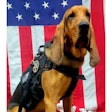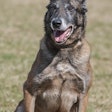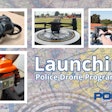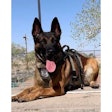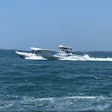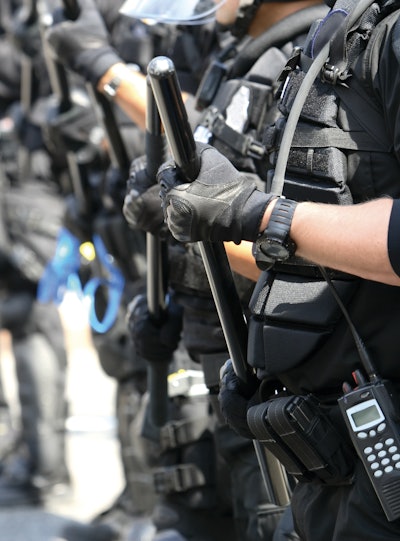 The Tucson (AZ) Police Department (not pictured) has a Mobile Field Force to handle riot response, but the agency's goal is to not need it.Photo: Gettyimages.com/ filo
The Tucson (AZ) Police Department (not pictured) has a Mobile Field Force to handle riot response, but the agency's goal is to not need it.Photo: Gettyimages.com/ filo
A riot isn't always just a riot. Sometimes it's a learning experience.
On the night of April 2, 2001, the good citizens of Tucson, AZ, stayed glued to their TVs following the University of Arizona men's basketball team loss at that year's NCAA Championship. Not necessarily for post-game analysis…but to watch the community seemingly lose its mind.
Hours after the Duke Blue Devils had hoisted the winning trophy aloft, thousands of alcohol-lubricated fans upset at their team's title loss poured onto Fourth Avenue, a five-block strip of bars and clubs near campus. What started out as a curb-to-curb crush of students chanting "U of A!" and "Duke sucks!" turned into increasingly violent property damage—and eventually, utter chaos.
It was a scene Tucsonans weren't familiar with: a night filled with the sounds of breaking glass, the whir of police helicopter blades, and car after car being flipped, ripped apart, and set on fire by rioters. Clouds of dark smoke billowed from the destruction and riot-gear-clad police were openly pelted by bricks and bottles over a basketball game.
"It was a baptism by fire, if you will," says Sgt. Tim Froebe, then a newly minted officer who found himself assigned to his first active-duty skirmish line. "From that level, within the trenches, I didn't have a perspective of the larger events beyond what was in front of me."
Working Smarter, Not Harder
Fast forward to 2019. Demonstrations and sports celebrations run amok are still a concern for the Tucson Police Department, as they are for law-enforcement agencies across the nation. But the way TPD handles crowd control is very different from what it once was.
Working smarter, not harder—particularly on the front end of events—is the name of the game today.
From his spartan desk in the basement of the Patrick K. Hardesty Midtown Multi-Service Center—headquarters for Tucson PD's Specialized Response Division—Capt. Mark Timpf explains how the department got here from there.
"'Crowd control'—I almost don't like that term," he says. "Crowd management for public safety purposes is basically what we're doing. Any time you have any large crowd, it's a management issue for the police. But we really have no interest in 'controlling' anybody who wants to express themselves responsibly."
Sitting nearby is Froebe, who now has a more global perspective on crowd control and has actively participated in helping the department adjust its training, tactics, and equipment needs.
The department still has a formal Mobile Field Force equipped and trained to respond to large-scale disturbances. It has been mobilized for NCAA-related sports riots on Fourth Avenue in 1997 and 2001, as well as a large civil disturbance in 2014 near the university main gate. But it is not the automatic go-to for crowd containment in Arizona's second-largest municipal police department.
"Those early tactics were based off of a military-style response, and are designed for action," says Froebe, a former Marine who has been with the department for 24 years. "You deployed with that in mind. But if you come prepared for a riot, you get a riot. Today, we realize there are a lot of (alternatives) before that happens."
A Fluid Process
Unlike cities that feature central public squares where large gatherings naturally occur, crowds in Tucson can pop up almost anywhere: shopping districts; public parks; university grounds; and outside military, educational, hospital, library or law enforcement properties. An especially popular demonstration site is located downtown beside the city's sleek, multi-story federal courthouse.
The diversity of venues and crowd sizes dovetails perfectly with Tucson Police Department's new approach, which has decentralized crowd control into smaller, task-oriented teams and a flexible response protocol that can be scaled up or down according to need.
"It's a very fluid process," says Timpf, a 29-year policing veteran on his fourth tour as division commander. "You have to assess what the actual circumstances are, what resources are going to be needed, and take action based on that assessment.
"Study the crowd to see what it contains," he continues. "Look at the numbers, overall demeanor, whether (bars) are over-serving people, and where people are coming into the crowd. If a few of them are wearing masks, that's not a good sign."
While Tucson hasn't experienced some of the more extreme protest tactics seen in other large cities, crowd dynamics have certainly become more volatile in the past few years.
"Crowds have become more vocal and are taking far more action than they used to," Froebe says. "And because everything is out on social media, whatever group is out there to protest (may generate) an equal amount of counter-protesters. That's where things get out of hand."
Customized crowd management can take on many forms here. At one end of the spectrum, at small or low-key gatherings, having one officer on scene to monitor group action may be enough. If an event escalates—due to the arrival of instigators, for example—one of several Small Unit Tactics teams from the appropriate substation can quickly be called into action. SUT teams consist of suitably equipped, on-duty patrol officers trained in crowd management and control techniques who can address disturbances or surgically remove agitators.
"Understanding the crowds you're dealing with—that's something that was not even a consideration 40 years ago," Froebe says. "Now we spend a lot of time thinking about and recognizing that, and training for it."
Should an incident intensify beyond SUT capacity, the department's formal Mobile Field Force can be deployed to establish full crowd control. Even at that point, though, the management system is flexible enough to de-escalate the response, should a situation stabilize. A deployed MFF might well never move beyond its staging area, but will be there if needed.
Even so, today's Mobile Field Force tactics won't necessarily look like those put into play on Fourth Avenue in 2001, when hundreds of officers responded, deploying ARWEN 37s, flex batons and stingball grenades.
"One of the things we trended away from was the use of impact munitions, and the utilization of gas and other irritants," Timpf explains. "It's not that we don't have those tools. It's just not typically a strategy for us."
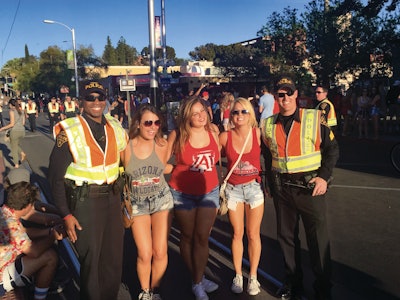 Officers pose for photos with fans, offer up bottles of water during outdoor events, and occasionally hand out swag.Photo: Tucson PD
Officers pose for photos with fans, offer up bottles of water during outdoor events, and occasionally hand out swag.Photo: Tucson PD
Preventing a Crisis
Of course, Tucson Police Department isn't the only agency internally reviewing its crowd-control strategies, says Tamara D. Herold, a professor of criminal justice at the University of Nevada at Las Vegas. What seems to set it apart is that the department began its evolution proactively.
"Clearly, post-Ferguson, there has been an emphasis in many cities on improving crowd management practices," she says. "Crisis gives us an opportunity to ask ourselves if we should be doing something differently, and a lot of departments have been asking that more recently.
"Over the years, we've learned a lot in psychology, sociology, and criminal justice about human behavior and how to best manage and de-escalate situations," she adds. "If Tucson Police Department is doing this not in the wake of a crisis, but in order to prevent one, they're far ahead of the curve."
Tucson PD readily admits that its change in philosophy from old-school riot control to modern crowd management didn't develop in a vacuum. The department has looked to other law enforcement agencies—including those in the United Kingdom, Ireland, Germany and Belgium—for best practices, as well as "lessons learned." In years when the Arizona Wildcats didn't reach NCAA tournament play, Tucson PD officers have been sent to U.S. cities whose teams had advanced, to see firsthand how local authorities managed their own crowds.
Some ideas brought back include encouraging more direct, casual conversation with participants during events. Officers pose for photos with fans, offer up bottles of water during outdoor events, and occasionally hand out swag. Before one University of Arizona game, they distributed thousands of colorful rubber bracelets that referenced a UA sports slogan: "Tucson Police Bear Down with Pride."
Borrowing on a European model, the department worked to establish Community Network Teams – groups of specially trained officers who automatically deploy to large gatherings, and work before, during and after to establish a dialog with participants. Sometimes protesters will assist CNT officers by pointing out troublesome or unwanted persons so they can be cautioned, moved along or arrested, if need be.
For pre-planned events or those TPD learns about through intelligence work, team members identify and meet with organizers. In addition to creating trust, it's also a good way to dispense and gather tactical information.
"It gives us a chance to outline what we can do for them," Froebe says, "but also to (discuss) what the rules are, what's acceptable, and what we would have to take action on."
"We're not giving them license to break the law," Timpf adds, "but what we don't like to do is be so rigid that you're likely to have a big problem. Sometimes you have to assess what their actions are going to cause – like the brief takeover of an intersection – and make strategic decisions on how we're going to deal with that (ahead of time)."
Of course, outreach doesn't always work.
"There are certain groups that are very anti-police, very anti-government, very anti-anything," Timpf says. "My personal experience is that you're not going to establish a dialogue with them – you're just not. You have to find more moderating influences … that could have some impact."
Operations Plans
Additionally, TPD now creates a detailed operations plan for large events well in advance. Preparations for March Madness-related activities start three months prior and result in a document measuring about three inches thick. The department reaches out to major and minor stakeholders—not just Tucson Fire Department and other municipal agencies, but also university officials and student organizations, merchants' associations, neighborhood groups, operators of large student-housing complexes in the area, and the like.
As part of that outreach, TPD will do free security assessments of Fourth Avenue businesses and make specific recommendations: To prevent theft and vandalism by passersby, take sidewalk tables and decorative items inside. To reduce the chance of damage, remove vehicles from the area. To minimize potential projectiles, serve alcohol in plastic cups instead of bottles on game days. And to eliminate electrocution hazards, de-energize overhead wires along the streetcar line.
Officers will also canvass problem areas in advance, removing dumpsters, trash cans, newspaper vending machines or other items to reduce crowds' access to hazards, should a celebration get out of control.
"It's a continuous evolution," Froebe says. "Our success is not based on how many arrests we make, or how few cars we can keep from getting turned over. It's measured by how little action we have to take. That's a win for us."
Freelance writer Bryn Bailer is based in Tucson, AZ.








